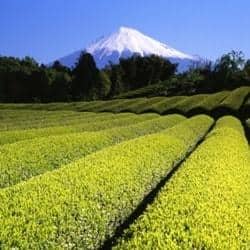Your basket is currently empty!
The Health Benefits of Japanese Green Tea
The Health Benefits of Japanese Green Tea: they have a formidable reputation.
 From the late nineteenth until the mid twentieth centuries Japan did produce some black tea but this ceased in the face of competition from new tea producing areas of the world. Originally, its tea making techniques and philosophy came from China but this has evolved over the centuries to become a distinct culture of its own as epitomized by Chanoyu, the Japanese Tea Ceremony.
From the late nineteenth until the mid twentieth centuries Japan did produce some black tea but this ceased in the face of competition from new tea producing areas of the world. Originally, its tea making techniques and philosophy came from China but this has evolved over the centuries to become a distinct culture of its own as epitomized by Chanoyu, the Japanese Tea Ceremony.
Japanese teas tend to be grassy, smooth and vegetal and hence are distinct from the Chinese style of green tea. This is often achieved having been at least partially grown in the shade. This increases their chlorophyl content making them smooth and low in tannin.
History
Japan puts much emphasis on the quality of manufacture of its teas and less importance is attached to where the tea is grown or the style of its leaf – both important aspects of Chinese tea appreciation.
Japan can trace its tea drinking expertise back to the eighth century when it sent diplomats to China to learn about the cultivation and making of tea. Tea seeds may have been brought to Japan from China by monks Kukai and Saicho who had lived in China for several years. In the Kamakura period (1192-1333) Myoan Eisai, founder of the Buddhist Rinsai sect, encouraged tea drinking for general good health. In the first Japanese book on tea ‘Tea Drinking Good for the Health’ he wrote that tea would remedy all disorders. Tea in Japan for centuries has however been promoted for its beauty and simplicity and the pleasure of the drinking rather than purely for health purposes.
How Japanese Tea is made
Almost all tea in Japan is steamed although a little is pan-fired. Steaming helps retain the flavour of green tea and enhances its distinct green colour. The characteristically straight, needle like leaf is produced by rolling the leaf over gently heated ridges.
Teas such as Sencha Gyokuro (Jade Dew) and Tencha, ground for the manufacture of Matcha, are grown in the shade for several weeks prior to harvesting. This increases the chlorophyll content of the leaf which results in a smoother drink with an obvious vegetal sweetness.
Which Japanese teas are best for Health?
The first picking of the new spring season throughout all tea producing areas in Japan is known as Shincha and is renowned for having the highest polyphenol content of any tea. This is concentrated in the tiny buds and leaves picked for Shincha, picked in April to early May, before the first flush teas are available. This exquisite tea is produced in small quantities and is correspondingly expensive and usually sells out by July.
The shaded teas such as Sencha Gyokuro, have experienced less photo-synthesis. This enhances the presence of the natural amino acid theanine. This is believed to have the benefit of making these teas more relaxing. The most famous area for producing Gyokuro is Uji, followed by Okabe and Yame.
Health Benefits of Japanese Green Teas
In addition to Theanine green tea contains an abundance of antioxidants, specifically polyphenols, over half of which are flavonoids; vitamins B1, B2 and C, fluoride, minerals and proteins. Flavonols, a polyphenol, is rich in four catechins, especially EGCG (epigallocatechin gallate) which is the most bioactive catechin in green tea. This is particularly rich in the vivid green teas for which Japan is famous. This is evident in the golden green colours of the infused teas and their vegetal flavour characters. EGCG is known to combat cholesterol and is considered to be anti-carcinogenic.
If you have yet to experience Japanese tea and love green teas start your journey of appreciating their fabulous tastes, aromas and special smoothness. It might well do your health some good too!
Go to the Japanese Green Teas section of our Tea Store.
